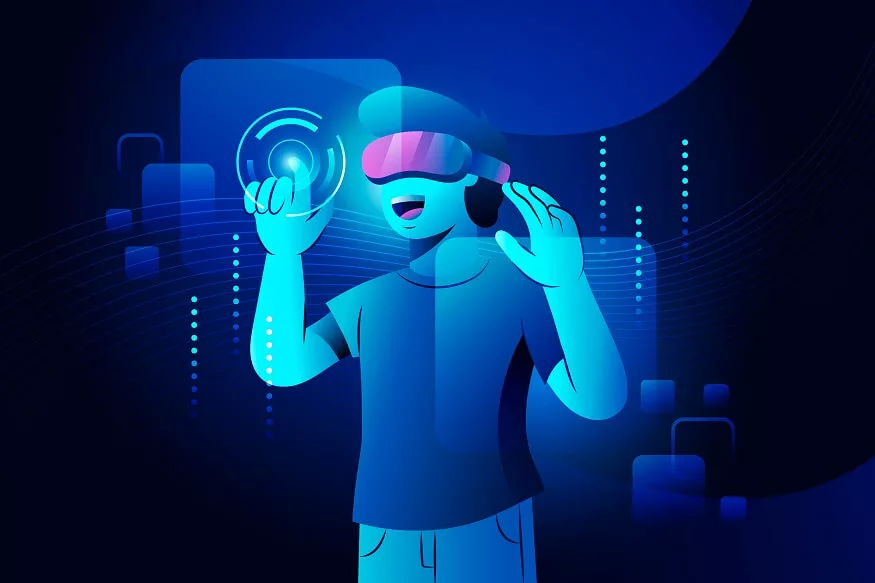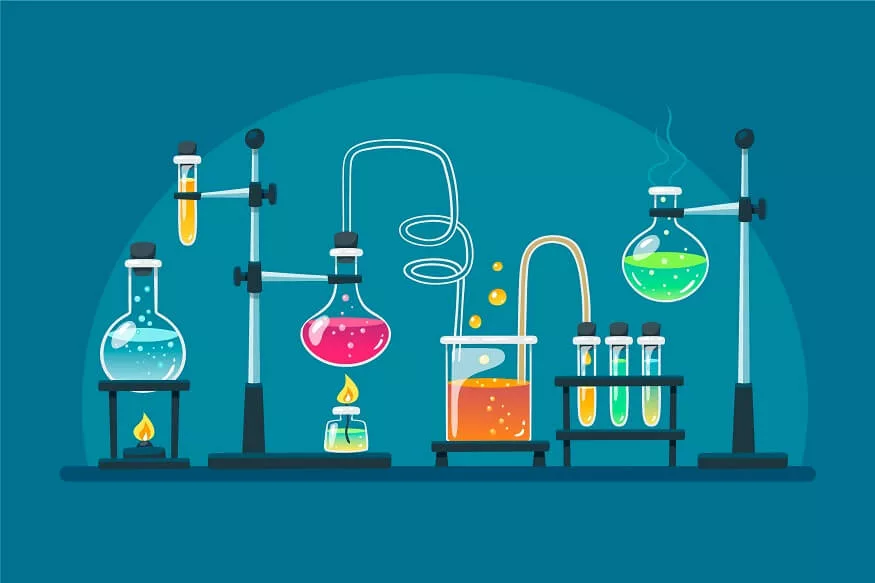What is Visual Learning in Education:
Visual learning is a prominent and effective approach in education, leveraging visual elements to enhance comprehension and retention. In the realm of education, several important elements contribute to the success of visual learning. In this blog, we will explore what is visual learning and communication, the elements, and the benefits of communication and visual learning in education.
Essential Elements of Visual Learning:
Here are some important elements of visual learning. Before delving into elements of visual learning, everyone should know what visual learning is.
1. Visual Aids:
Visual aids such as diagrams, charts, graphs, maps, and illustrations are essential in visual learning. These tools help students understand complicated ideas by reducing them. Teachers often use visual aids to supplement verbal instructions, providing a multi-sensory experience that caters to various learning styles.
2. Graphic Organisers:
Graphic organisers, like mind maps, concept maps, and flowcharts, are powerful tools for visual learners. These structures help students organise information spatially, establishing connections between different concepts. They serve as visual frameworks that enhance understanding and memory retention.
3. Interactive Whiteboards and Technology:
Modern educational technology, such as interactive whiteboards and digital presentations, facilitates dynamic visual learning experiences. Teachers can engage students with interactive lessons, incorporating animations, videos, and virtual simulations. This technology promotes active participation and makes abstract concepts more tangible.
4. Visual Learning Strategies:
Educators employ various visual learning strategies to cater to diverse student needs. For instance, using colour coding to highlight key points, incorporating visual metaphors, and providing real-world examples through images can make learning more engaging and memorable.
5. Educational Videos:
The use of educational videos has become increasingly prevalent. Videos can bring concepts to life, providing dynamic visual representations of theories and processes. Platforms like YouTube, Khan Academy, and educational streaming services offer a vast array of visual resources that support classroom learning.
6. Visual Assessment Tools:
In addition to traditional assessments, visual assessments, such as projects, presentations, and visual portfolios, allow students to showcase their understanding in creative ways. These assessments not only evaluate knowledge but also enhance communication skills.
7. Spatial Learning Opportunities:
Visual learning often involves spatial reasoning, and educators can create opportunities for spatial learning. Activities that involve arranging objects, building models, and solving spatial problems contribute to a holistic visual learning experience.
8. Cognitive Mapping:
Cognitive mapping involves the mental representation of knowledge. Visual learners benefit from activities that encourage them to create mental maps of information. This can include asking students to visualise processes, historical timelines, or geographical locations.
Also Read: Preschool Learning Activities For Kids To Become Independent
Essential Elements of Communication in Education:
Effective communication is a cornerstone of successful education. In the context of education, communication involves various elements that contribute to a conducive learning environment:
1. Clear Instructions:
Clear and concise instructions are fundamental to effective communication in the classroom. Students need to understand expectations, assignments, and tasks to engage meaningfully with the learning process.
2. Active Listening:
Active listening is a critical element of a powerful communique. Teachers should pay close attention to their college students and foster an environment in which questions and issues may be resolved. This gives college students a sense of validation and encourages them to take part.
3. Nonverbal Communication:
Nonverbal signals are one of the crucial benefits of communication, consisting of facial expressions, body language, and gestures, add to that means. The teacher ought to be aware of their nonverbal communique for their verbal messages to be non-stop.
4. Feedback Mechanisms:
Constructive feedback is essential for student growth. Teachers provide feedback on assignments, class participation, and assessments, helping students understand their strengths and areas for improvement. Additionally, encouraging peer feedback can enhance collaborative learning.
5. Inclusive Communication:
Inclusive communication acknowledges and respects diverse perspectives and learning styles. Teachers should be aware of cultural differences and adapt their communication strategies to create an inclusive and supportive learning environment.
6. Technology-Mediated Communication:
The integration of technology in education has introduced new forms of communication, such as online forums, email, and virtual classrooms. Educators must be proficient in utilising these tools to facilitate effective communication, especially in blended or fully online learning environments.
7. Visual Communication:
Visual elements play a significant role in communication within educational settings. Whether through presentations, charts, or multimedia content, visual aids enhance the understanding of concepts and engage students in the learning process.
Also Read: Benefits of Mind Mapping for Learning and Creativity For Preschoolers
Benefits of Visual Learning and Communication in Education:
Visual learning and communication play pivotal roles in education, offering numerous benefits that enhance the overall learning experience for students. From improved comprehension to increased engagement.
Benefits of visual learning:
Let’s explore some important key benefits of visual learning in education.
● Enhanced Understanding:
Visual learning aids, such as diagrams, charts, and graphs, help students better understand difficult ideas. The use of visual elements can help to provide a more clear and natural understanding of abstract or difficult topics.
● Improved Retention:
Research indicates that information presented visually is often better retained than information presented through other means. Visual learning engages the brain in a way that enhances memory, leading to improved long-term retention of knowledge.
● Increased Engagement:
Visual stimuli capture attention and can make the learning experience more engaging. Integrating visual elements into lessons can help sustain students’ interest, making the educational process more enjoyable and effective.
● Catering to Different Learning Styles:
Individuals have diverse learning styles, and visual learning caters to those who prefer processing information visually. Recognising and accommodating these learning styles in the classroom fosters inclusivity and supports a broader range of students.
● Promotion of Critical Thinking:
Visual learning often involves interpreting and analysing visual representations. This process stimulates critical thinking skills as students decipher information, identify patterns, and make connections between visual elements and concepts.
● Facilitation of Communication:
Visual aids serve as a common ground for communication between teachers and students. Concepts can be conveyed more precisely, reducing the likelihood of misunderstandings. This clarity in communication contributes to a more effective learning environment.
● Real-world Application:
Many professions require the ability to interpret and create visual representations. Visual learning not only prepares students for academic success but also equips them with skills applicable to various real-world scenarios and careers.
● Personalised Learning:
Visual learning allows for a degree of personalisation in education. Students can create their visual summaries, diagrams, or mind maps to represent their understanding of a topic, promoting individualised learning approaches.
● Increased Accessibility:
Visual aids can enhance accessibility for students with different learning needs. For example, visual representations can benefit students with dyslexia or those who may struggle with traditional text-based learning.
Also Read: The Importance of Breakfast: How the first meal impacts learning and energy levels
Benefits of Communication in Education:
Here are some important key benefits of communication in education.
● Clear Understanding:
Effective benefits of communication in education ensure that information is conveyed clearly and understood accurately. This clarity is crucial for students to grasp new concepts, follow instructions, and actively participate in the learning process.
● Feedback for Improvement:
Communication, especially through feedback, provides valuable insights for students to understand their strengths and areas that need improvement. Constructive feedback serves as a guide for students to enhance their performance.
● Cultural Awareness:
Communication in a diverse educational setting requires cultural sensitivity. Teachers who are aware of and respect cultural differences can tailor their communication to be inclusive and considerate of varying backgrounds and perspectives.
● Enhanced Collaboration:
One of the important benefits of communication is that it encourages collaboration among students, between students and teachers, and among educators. Collaborative learning experiences are enriched when communication is clear, fostering a sense of teamwork and shared goals.
Also Read: The Benefits of Cooperative Learning in the Classroom
At EuroSchool, we understand the importance and benefits of visual learning communication in education are vast and impactful. As educators continue to leverage visual communication tools and techniques, they empower students to become active participants in their learning journey, preparing them for success in a visually oriented and interconnected world.










